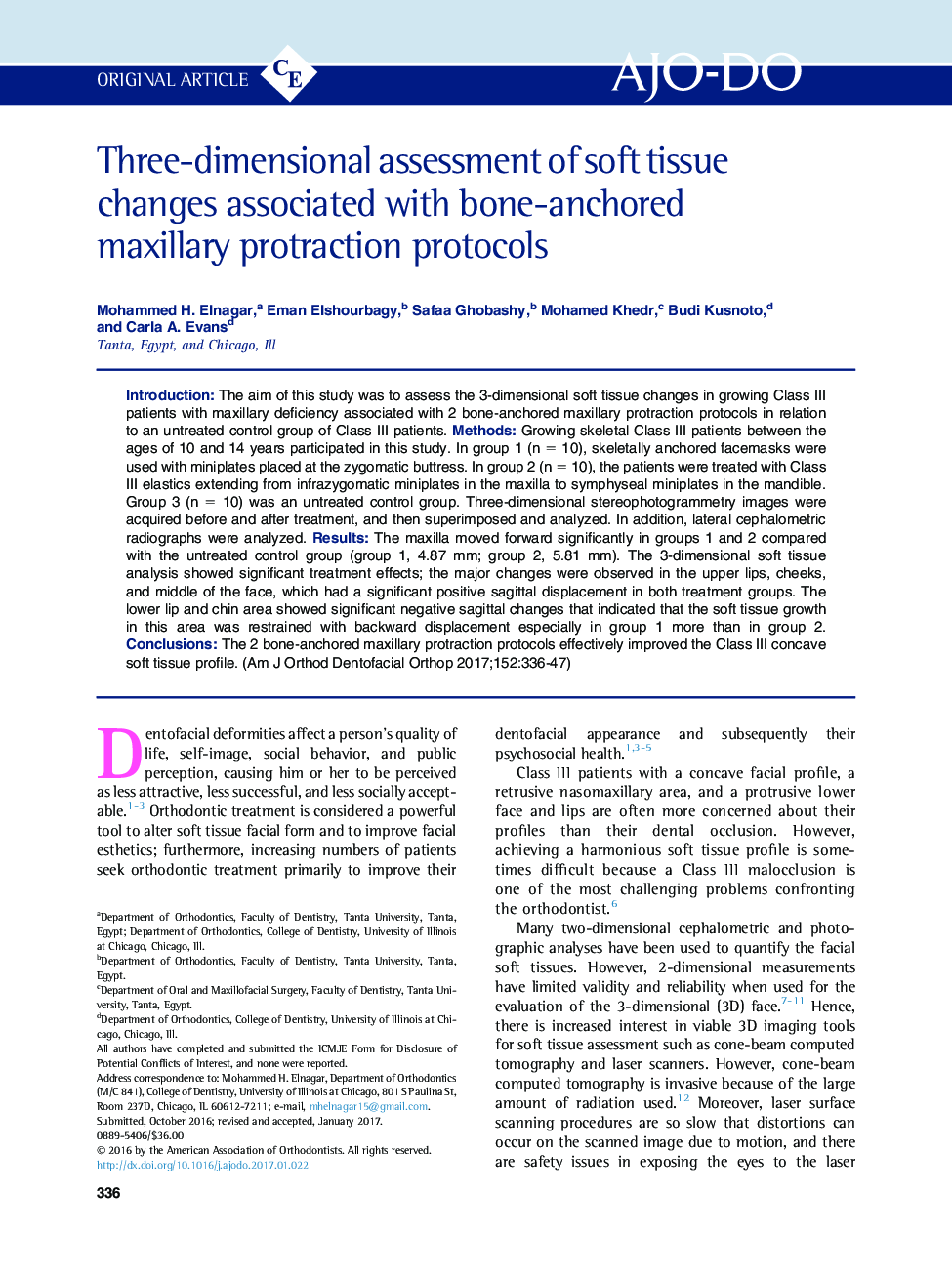| Article ID | Journal | Published Year | Pages | File Type |
|---|---|---|---|---|
| 5637450 | American Journal of Orthodontics and Dentofacial Orthopedics | 2017 | 12 Pages |
â¢We studied 3D soft tissue changes in 2 bone-anchored maxillary protraction protocols.â¢There were positive sagittal displacements in the upper lips, cheeks, and middle of the face.â¢The lower lip and chin areas showed significant negative sagittal changes.â¢The 2 protocols effectively improved the Class III concave soft tissue profile.
IntroductionThe aim of this study was to assess the 3-dimensional soft tissue changes in growing Class III patients with maxillary deficiency associated with 2 bone-anchored maxillary protraction protocols in relation to an untreated control group of Class III patients.MethodsGrowing skeletal Class III patients between the ages of 10 and 14 years participated in this study. In group 1 (n = 10), skeletally anchored facemasks were used with miniplates placed at the zygomatic buttress. In group 2 (n = 10), the patients were treated with Class III elastics extending from infrazygomatic miniplates in the maxilla to symphyseal miniplates in the mandible. Group 3 (n = 10) was an untreated control group. Three-dimensional stereophotogrammetry images were acquired before and after treatment, and then superimposed and analyzed. In addition, lateral cephalometric radiographs were analyzed.ResultsThe maxilla moved forward significantly in groups 1 and 2 compared with the untreated control group (group 1, 4.87 mm; group 2, 5.81 mm). The 3-dimensional soft tissue analysis showed significant treatment effects; the major changes were observed in the upper lips, cheeks, and middle of the face, which had a significant positive sagittal displacement in both treatment groups. The lower lip and chin area showed significant negative sagittal changes that indicated that the soft tissue growth in this area was restrained with backward displacement especially in group 1 more than in group 2.ConclusionsThe 2 bone-anchored maxillary protraction protocols effectively improved the Class III concave soft tissue profile.
